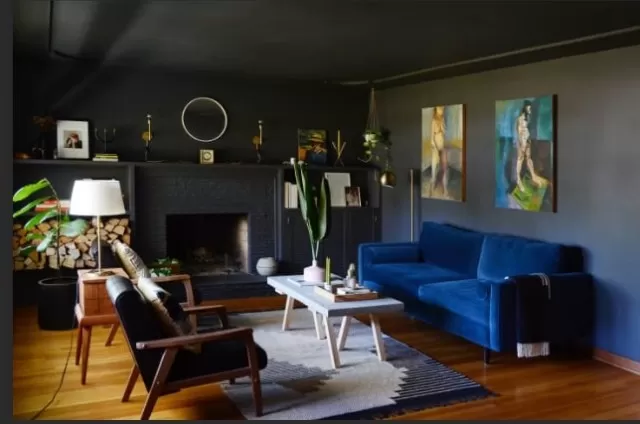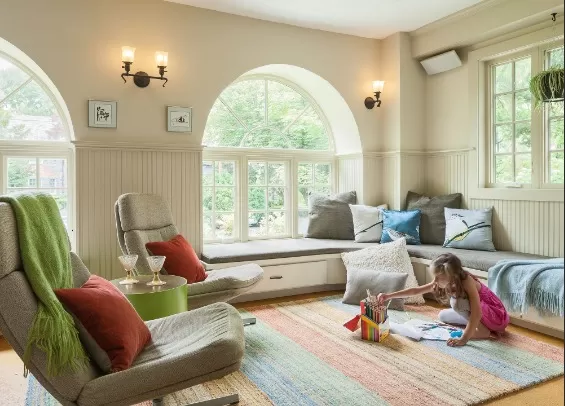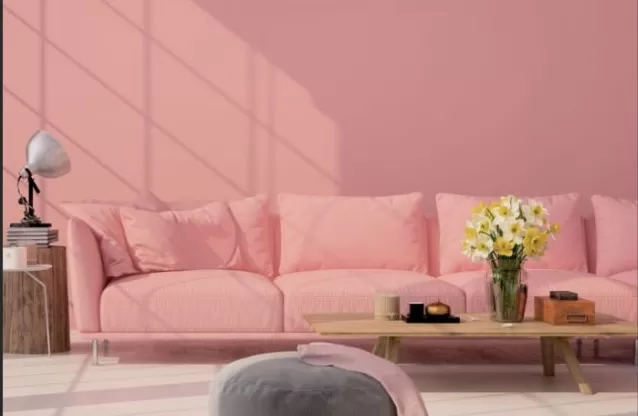Breaking the Mold: 5 Paint Color Rules to Challenge. When it comes to interior design, rules can be a helpful guideline, but sometimes breaking them can lead to unique and stunning results. Here are five common rules about Paint Colors that you may want to reconsider and some tips for flouting these rules to create a delightful effect in your home.
“Rethinking the Use of Black on Walls”

When it comes to choosing colors for interior walls, black is often not the first option that homeowners consider.
However, there are a few courageous individuals who have embraced this bold shade, and the results are truly remarkable. Take, for example, this dining room designed by Roughan Interior Design, where the use of black paint adds a touch of elegance, particularly when combined with traditional molding and sleek lines.
The secret to successfully incorporating black indoors lies in achieving a harmonious balance between the visual impact of the color and lighter tones such as pristine white or subtle gray.
“Create a Serene Ambiance with Restful Colors in Your Bedroom”
If you have a penchant for vibrant colors like fiery red or sunny yellow, there’s no need to limit yourself to muted neutrals or coastal blues when it comes to your private sanctuary—the bedroom.
Nowadays, bedrooms serve multiple purposes beyond sleep; they also function as workspaces, reading nooks, and relaxation retreats. Surrounding yourself with your favorite colors in this space can both inspire and calm you. To strike a balance with the boldest hues, incorporate generous doses of white accents in the woodwork, furniture, and plush fabrics. Take inspiration from this vibrant bedroom designed by Mandeville Canyon Designs, where the combination of colorful elements with white details creates a harmonious and soothing ambiance.
“Dispelling the Myth: Beige is Anything but Boring”

Beige often receives unwarranted criticism in the realm of home design, with many considering it the safe choice for those who shy away from experimenting with color.
However, the reality is that beige can serve as an excellent canvas for creating vibrant and energetic interiors. In this example, skillfully crafted by Tobi Fairley, beige takes on an exciting role by serving as the backdrop for captivating elements such as bold fabric patterns and lively bursts of color on furniture and accessories.
By layering these eye-catching details, beige becomes far from mundane and instead transforms into a captivating and dynamic feature of the space.
“Embracing the Intimacy: Using Dark Colors in Small Spaces“
It is commonly believed that lighter paint colors are ideal for visually enlarging small spaces.
However, there are instances where homeowners intentionally opt for dark colors to enhance the cozy ambiance of a room. In such cases, dramatic hues like charcoal gray or jewel tones such as emerald or amethyst step forward to meet the challenge. To underscore the elegance of these shades, incorporate luxurious accents like ornate picture frames or velvet pillows. Additionally, choose slim and elegant furniture pieces that create an illusion of spaciousness within the room. By embracing the allure of dark colors, small spaces can exude a captivating and intimate atmosphere.
“Breaking Stereotypes: Pink Transcends Children’s Rooms”

Are you under the impression that pink is exclusively reserved for the bedrooms of young children? Think again! In contemporary times, this incredibly popular paint color has made its way into various spaces throughout the house.
With a diverse array of shades, ranging from delicate seashell to vibrant fuchsia, pink has proven its ability to thrive in more mature settings. Take, for example, this subtly pink room designed by Andrea Brooks Interiors.
By combining pink with sophisticated elements such as French doors and gilded accents, the Living Room achieves a remarkable balance between regality and playfulness. It is evident that pink has transcended its association with children’s rooms, emerging as a versatile and captivating choice for grown-up spaces.
*The information is for reference only.